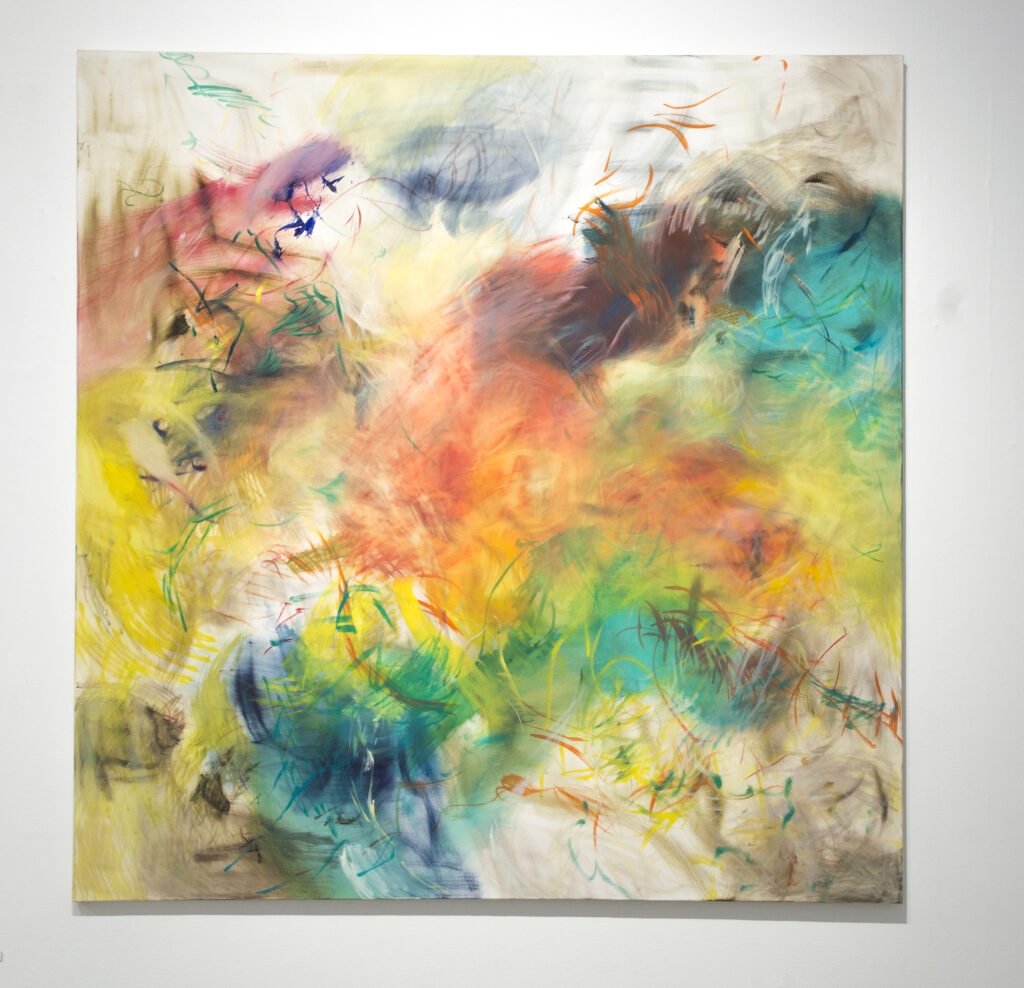The large scale allows for a sense that it is possible to step into the space of the painting. Space and movement can only be distinguished conceptually, in experience they are one — space is always experienced through movement. My paintings, in a way, move towards space, pass it, and leave it behind.
Painting is wandering, fumbling. There I am in the whirlwind of rapid changes, where I can trust that things will not go as planned. The layering of oil paint allows you to be peacefully lost when painting, as each new layer changes the composition, the atmosphere, everything. Much is about the corrective movement, when the material behaves differently than I anticipated. When I try to correct an area that is too stable, or when I destroy a form that is too obvious, by coincidence a space may occur on the canvas.
I am fascinated by phenomenological structurings of concealment. Western thought easily contains a certain requirement for transparency, the desire to see a thing as a whole, in the light that penetrates it. But the world never appears to us as a whole, and the world is not the sum of whole objects. It is a field of events where something emerges and is covered up. Concealment, not as a passing phenomenon but as a necessity, shows that the world is always structured from a certain situation and moment, and that it is always a living state of structuring. I would like my painting to retain its hiddenness, its ambiguity, and thereby its movement.




